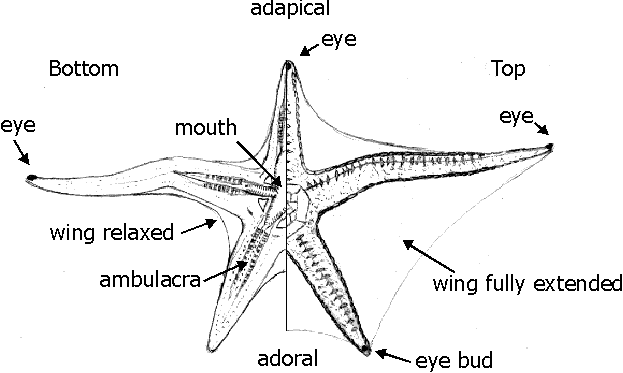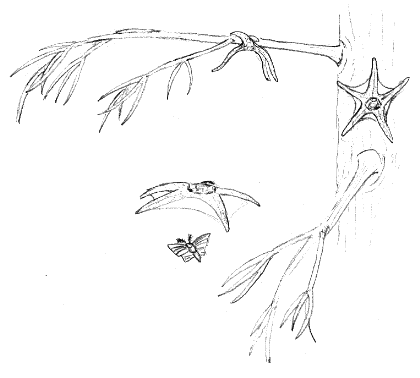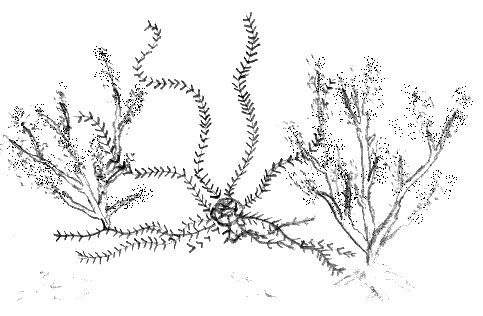
Echinoderms were an unexpected discovery. In our world these creatures are exclusively marine. While a number of species are fairly robust and can stay out of water for some time, the range of echinoderm adaptation to the terrestrial environment in the alternative world surprised us.

One of the most surprising varieties was the flying starfish. A sketch of the anatomy of one is above. The collagen like connective tissue of ecinoderms makes an astounding wing membrane. The animal's ability to change the mutability of the tissue means that it can be extremely stiff one moment and almost like liquid the next. The creature has five eyes, one on the end of each of its arms. The adapical trio of eyes are fairly acute, the adoral pair scarcely developed and are little more than light sensitive pits. The starfish can not truly fly, it is however considerably more able in the air than its gliding relatives.
Gliding starfish in a tree Both the flying starfish and its gliding cousins are predominantly arboreal. Most of the time they can be seen hanging underneath branches, waiting for their prey, mainly flying insects. Although a couple of species target the giant slugs droping onto their backs and feeding leech like on them. When they see their prey they drop from their branch, often using their wing membranes to guide their descent. The mutability of their wing membranes allows the creature to almost completely collapse the wing, this is a great advantage to the animal as they slowly climb back up a tree. |
 |
 |
A number of echinoderms live on the ground as ambush predators. Hiding amongst vegetation, waiting for their prey. Both starfish and their cousins the brittlestars have adapted to this means of life. They prey mainly on the giant slugs and snails, but occasionally they attack the faster moving arthropods too. The struggle between a whipstar and a giant centipede is a fascinating sight. |
The last group of echinoderms found on land are the slow moving urchins. Dome shaped creatures and herbivorous unlike their many armed relatives. They move slowly across the plains levering themselves along on a combination of tube feet and specially adapted walking spines.